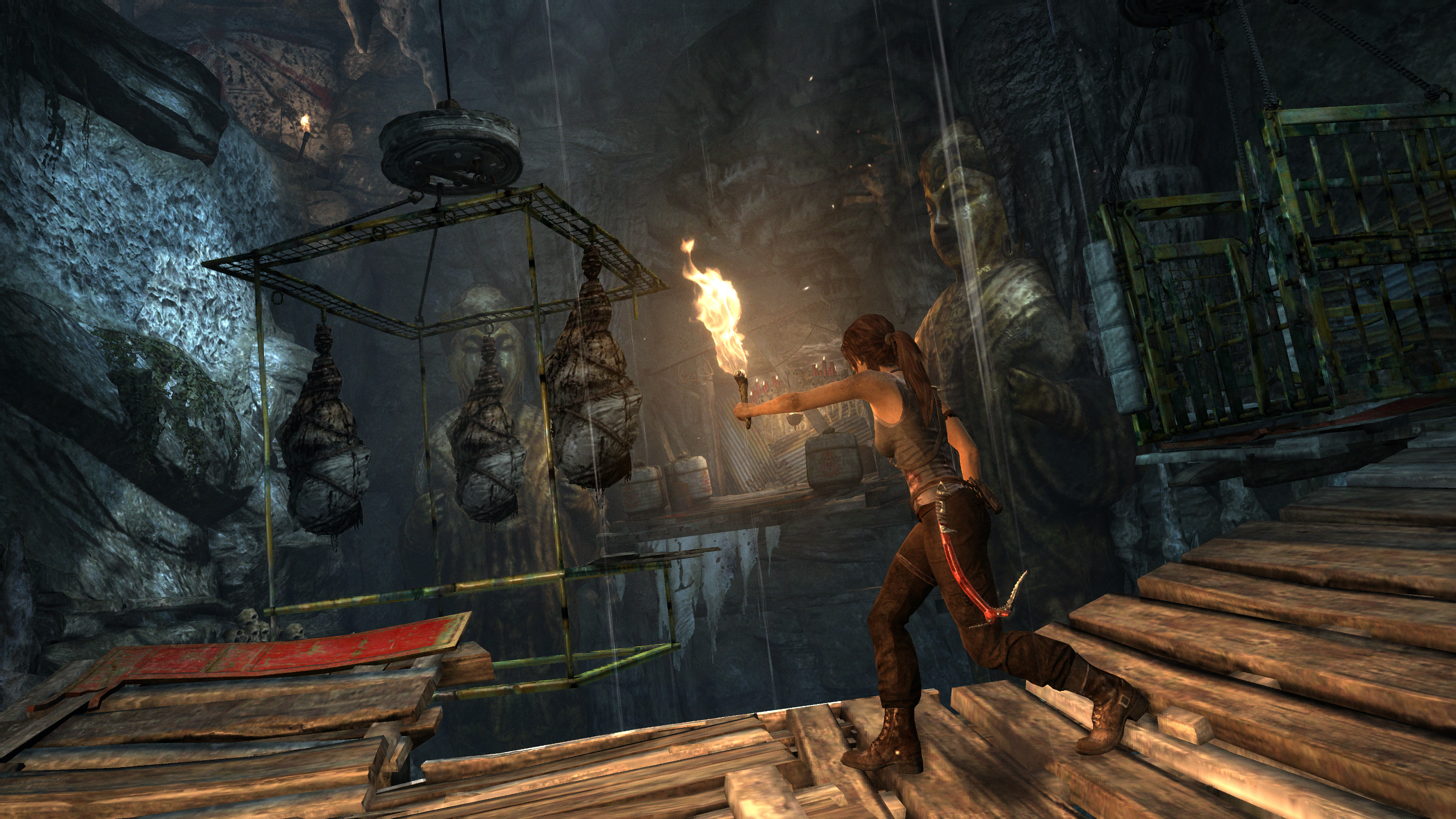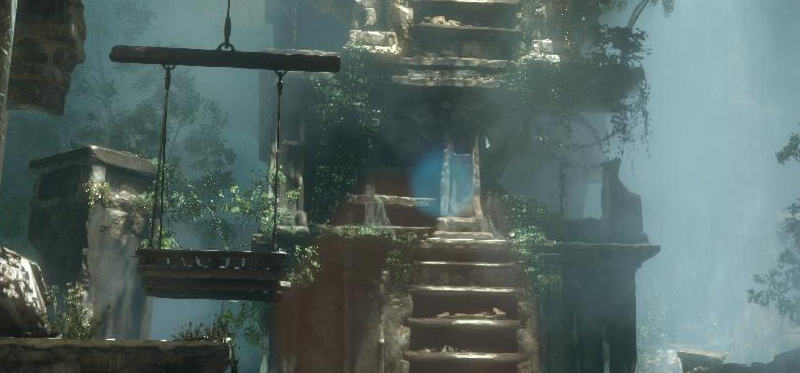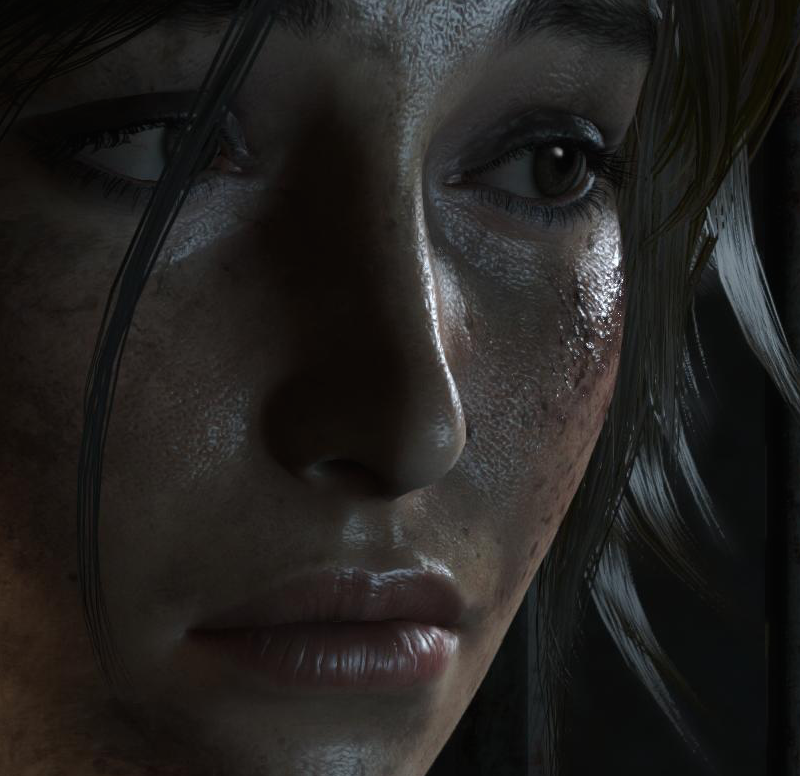 When we last saw Lara Croft, she was growing out of being a victim. A victim of fate, of other people's aggression, of her own uninspired previous playable incarnations. She's still growing, but she's different now.
When we last saw Lara Croft, she was growing out of being a victim. A victim of fate, of other people's aggression, of her own uninspired previous playable incarnations. She's still growing, but she's different now.
For most of Rise of the Tomb Raider, the second installment of a rebooted Tomb Raider series, Lara Croft doesn't go around being scared. She still faces down overwhelming odds, grapples with doubt, and absorbs a ton of trauma. The newest iteration of the iconic video game heroine displays less fumbly panic than she did in 2013's Tomb Raider. There are more moments of steely determination and fewer moments where she pauses to psych herself up. She knows what she's capable of---she hasn't forgotten that one time she wiped out a supernatural army, climbed a mountain, and took down a sun god. It feels like she's grown.
That feeling of growth is a key factor in this sequel. For Rise of the Tomb Raider to succeed, it needs to convince players that Lara has matured, but that she still has more growing to do. Yet the changes in a new installment can't be too radical, lest this Lara become unrecognizable to old and new fans.
Rise of the Tomb Raider tells the story of young Lara Croft, alone in a dangerous place, exploring ruins, solving puzzles, and shooting lots of guys with flaming arrows. It combines hunter/gatherer elements---where you need to scavenge for the stuff you need to survive or make weapons---with a mix of melee and ranged combat with pickaxes, guns or a bow and arrow.
Rise opens yet again with Lara searching for proof of a time-lost civilization. This time, however, her motivations come from a deeply personal place. Before he died, Lara's father was on a quest to find the Divine Source---an artifact said to grant eternal life---and the apocryphal Prophet who performed miracles with its power. Lara's continuation of his work is directly linked to her desire to restore respectability to the Croft name---her father's name. Her travels take her to a snow-swept mountain range in Siberia where she comes into conflict with a mysterious organization named Trinity, whose paramilitary goons are also looking for the Divine Source. Hello, cannon fodder.
Crystal Dynamics' latest effort at a Tomb Raider game benefits from smartly imagining the psychological underpinnings of both its heroes and villains. Just as Lara is trying to contend with her father's legacy, the main bad guy's thirst for power is likewise driven by very personal reasons. There are moments that you feel like you're fighting against a screwed-up worldview and not just a bunch of artificially-intelligent mannequins.
Rise of the Tomb Raider tweaks the gameplay formula established in its 2013 predecessor. There's a new crafting system that has Lara constantly foraging for resources that she can use to make ammo, equipment or bandages. Once she has enough resources, she can craft what she needs on the go. The player holds down the left bumper and can craft, mid-action. So, collecting deathcap mushrooms lets her make poison arrows that release a fatal gas. Similarly, other new craftable items increase the ability to silently skulk through encounters if you want. If loud, messy combat engagement is your thing, then you can quickly turn bottles and cans into molotovs and hand grenades.
Lara's newly improved abilities are a direct reflection of how much effort you put into exploring the gameworld. As her skills increase, her ability to spot resources and read the world gets more powerful. Lara buffs her mastery of ancient languages by finding murals and improves her arsenal and equipment by amassing exotic animal hides. Other combat upgrades let you pull off feats like multiple headshots at once with the bow. The way that ROTTR's mechanics are structured feeds into the overall sense of growing or maturing.
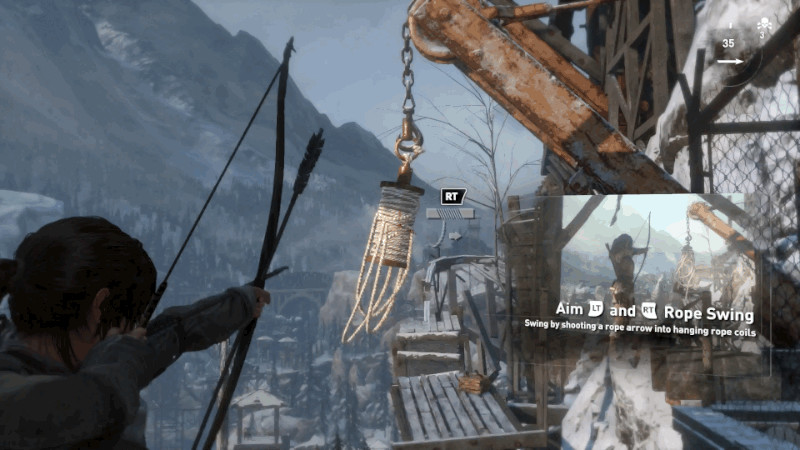
Aside from its opening chapters, Rise of the Tomb Raider is set around the geothermal valley in Siberia where Lara and Trinity have tracked the Divine Source. It's a gorgeously layered landscape that feels more like an open world than the terrain of the 2013 game. Whether snowy or lushly green, the terrain feels alive, teeming with plant-based resources or animals to stalk (or flee). Aside from scads of posthumous testimonials about the history of its events and fiction, the game also teases players with optional tombs. The entrances to these tombs are secreted away and you'll need to apply some extra effort to even find them. Once you find these tombs, you'll be faced with a single physics-based environmental puzzle---familiar to longtime Tomb Raider fans. But you'll need to navigate through various section of the tombs to trigger various elements necessary to their solution. As a result, they wind up feeling bigger and more significant.
The game's also got side missions---given to you by actual in-world quest-givers---that grant you new tools/weapons, like a lock pick and crafting tool. You can also use in-game currency to obtain some of these weapons and equipment from the supply shack that opens up in the first third of the game.

This is an enjoyable sequel and the reason it's very fun is because it feels upgraded in nearly every way. When I tried for stealthier approaches in the 2013 Tomb Raider, the results felt haphazard. In this game, I was able to plan and execute better, thanks to a plethora of options that let you blind or poison enemies from afar. The feeling of being a cunning predator was a welcome change for me, especially after enduring the emotional rawness of the last Tomb Raider. Another thing I liked about Rise of the Tomb Raider is how it constantly rewards your curiosity. If you head to a seemingly innocuous cliff or stop and take in your surroundings with Lara's survival instinct, you'll almost always find a resource or collectible waiting for you. I leaned hard on Lara's survival instinct because Rise of the Tomb Raider is the kind of game where I didn't want to miss a thing.
I played Rise of the Tomb Raider much like I did its predecessor: almost exclusively with the bow and arrow and as stealthily as my patience would allow. This time around, however, I didn't feel like a trembly twentysomething, scared of every shadow. I felt more like a hunter and explorer, systematically taking down enemies and challenges. That said, I didn't like having to unlock the same suite of weapons as in the last game. Lara knew how to counter enemies and perform quick stealth kills in the last game---why should she have to re-learn it now?
Unlike the Tomb Raider game from two years ago, Rise doesn't have any competitive multiplayer. Instead, it offers another gambit geared to entice players to keep returning to the game. The Expeditions feature lets you play remixed chunks of the story campaign in one of four modes---Chapter Replay, Chapter Replay Elite, Score Attack or Remnant Resistance.
In Remnant Resistance, you can create custom five-part missions by picking specific objectives, loadouts and time of day. Once you finish one of these missions, your friends will be challenged to do the same.
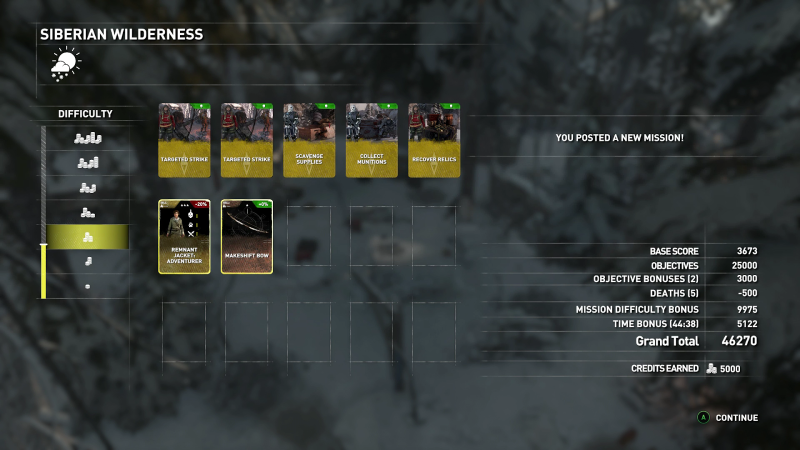
Completing Expeditions missions earns credits and winnings can be increased by using collectible cards as modifiers to increase difficulty, grant buffs and add challenge objectives.

So, a Lobotomy challenge tasks players to notch five headshots with the bow and arrow and using a Big Head card on enemies swells their craniums makes their torsos and limbs more resistant to damage. The credits you earn in Expeditions can be used to buy more card packs for increased variability in the missions you create. I enjoyed the handful of Expeditions missions I took on and the feature feels like a clever way of re-jiggering the work that's already in the game.
Rise of the Tomb Raider's greatest success is in how it encourages exploration, which in turn makes you feel more connected to its fictional world. Every hapless corpse in the frozen Russian wastes is a reminder that Lara's moving through a place that's killed many others. As I played, she came across as increasingly gifted, with enough spirit and ingenuity to find ways to see herself through to the other side. This Lara isn't a wide-eyed newcomer, nor is she a flinty veteran. She's somewhere in between. Rise of the Tomb Raider makes me want to follow her where she goes next.
Additional Thoughts on PC Version

Sometimes you just want to play a really pretty PC game, and in walks the PC port of Rise of the Tomb Raider. I already played through the enjoyably acronymed "ROTTR" on Xbox One last fall, and at the time was struck by how gorgeous the game could be.
It stands to reason that it'd look even better at a higher resolution and frame-rate, with some extra PC bells and whistles dropped in. Then again, a few messy recent PC ports have demonstrated some of the many ways PC versions can go awry. How does Rise of the Tomb Raider's stack up?
I've played five or six hours, and my verdict: solid port. The porting job was handled by the Dutch studio Nixxes, who usually handle PC porting for most Square Enix-published games (2013's Tomb Raider, Deus Ex: Human Revolution, Sleeping Dogs all come to mind). They do fine work, and from what I've played ROTTR is no exception.
I recently upgraded my PC, which is worth keeping in mind as I recount my experience: I'm running an i7-4770k with an overclocked 6GB GTX 980Ti, along with that 144Hz G-Sync monitor that I love so much. With that setup, I'm able to run the game at 2560x1440 (1440p) resolution at high or very high settings and, for the most part, it stays north of 60fps, occasionally dipping down to the still-playable mid-40s or 50s. I haven't had much time with the new optimized Nvidia driver that hit today, but I haven't seen a big difference between the game before and after I installed the driver.
ROTTR pushes my PC, but I'm actually happy to have a game that pushes my system for the right reasons. Unlike the frustrating PC ports of Just Cause 3, Fallout 4 and Batman: Arkham Knight, I have a good sense of the tradeoffs I'm making and so far haven't felt like the game is running poorly for no discernible reason.
And it really is incredible looking, particularly in 1440p. Look at this screenshot:
Enhance:
Enhance:
In-engine cutscenes are gorgeous, and I'm regularly impressed by how much this latest version of Lara Croft looks like an actual human being.
I mean, like... enhance:
Jeez.
ROTTR's PC version offers a variety of graphics settings; you can see mine here:


I've dropped the Level of Detail setting down from Very High to High and dropped Shadows to Medium, which keeps the game running well aside from some frame-rate drops as I enter some of the bigger open areas and some hitches in the midst of transition animations from one area to another.
Then there's the hair. Rise of the Tomb Raider is actually the first PC game in which I've left the hair tech---called "PureHair" this time around---turned on, rather than turning it off to improve my frame-rate. PureHair does impact performance somewhat, but Lara's hair looks good enough that I'm fine taking the hit.
Aside from its graphics, Rise of the Tomb Raider is another third-person action/adventure game that plays better with a controller than with a mouse and keyboard. Running, sneaking and shooting all work fine with a mouse and keyboard, and as usual I'm much more accurate when using a mouse. But platforming and puzzle-solving feel odd with a keyboard input. The game has some mechanical interactions---winding winches and breaking down brick walls, etc.---and they feel much more natural on a controller. Similarly, jumping puzzles feel awkward when navigated with a keyboard. Some of that is due to my own comfort level playing this type of game on consoles, so your mileage may vary.
